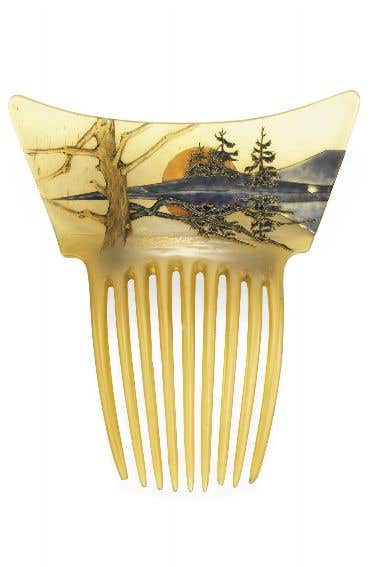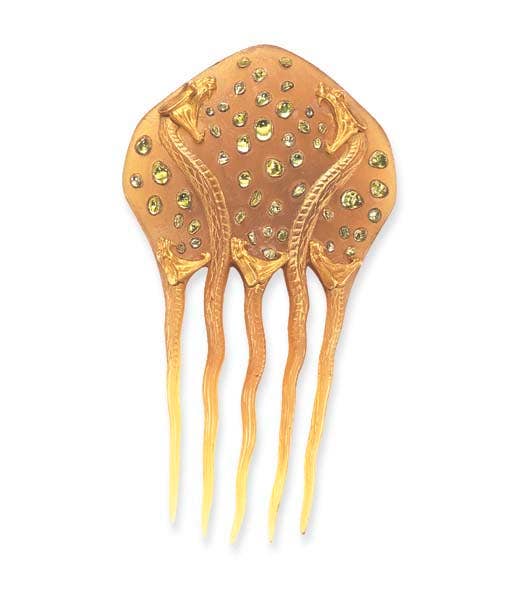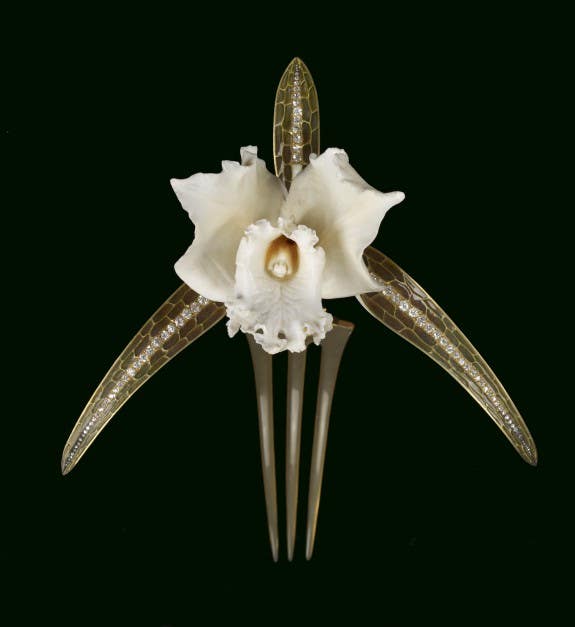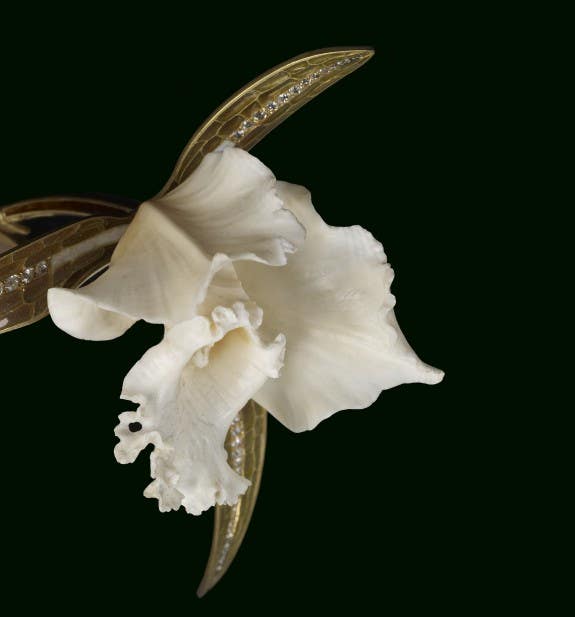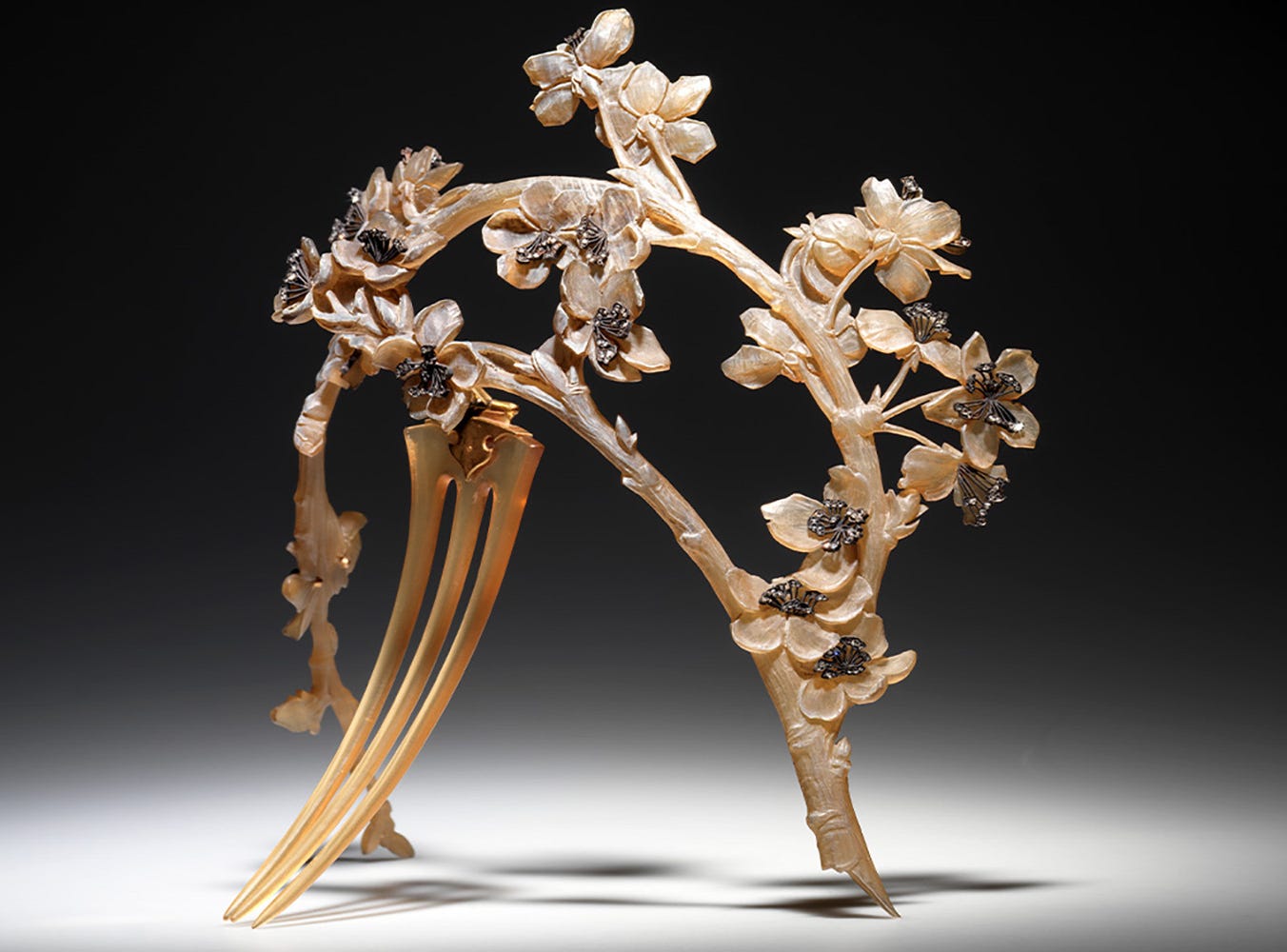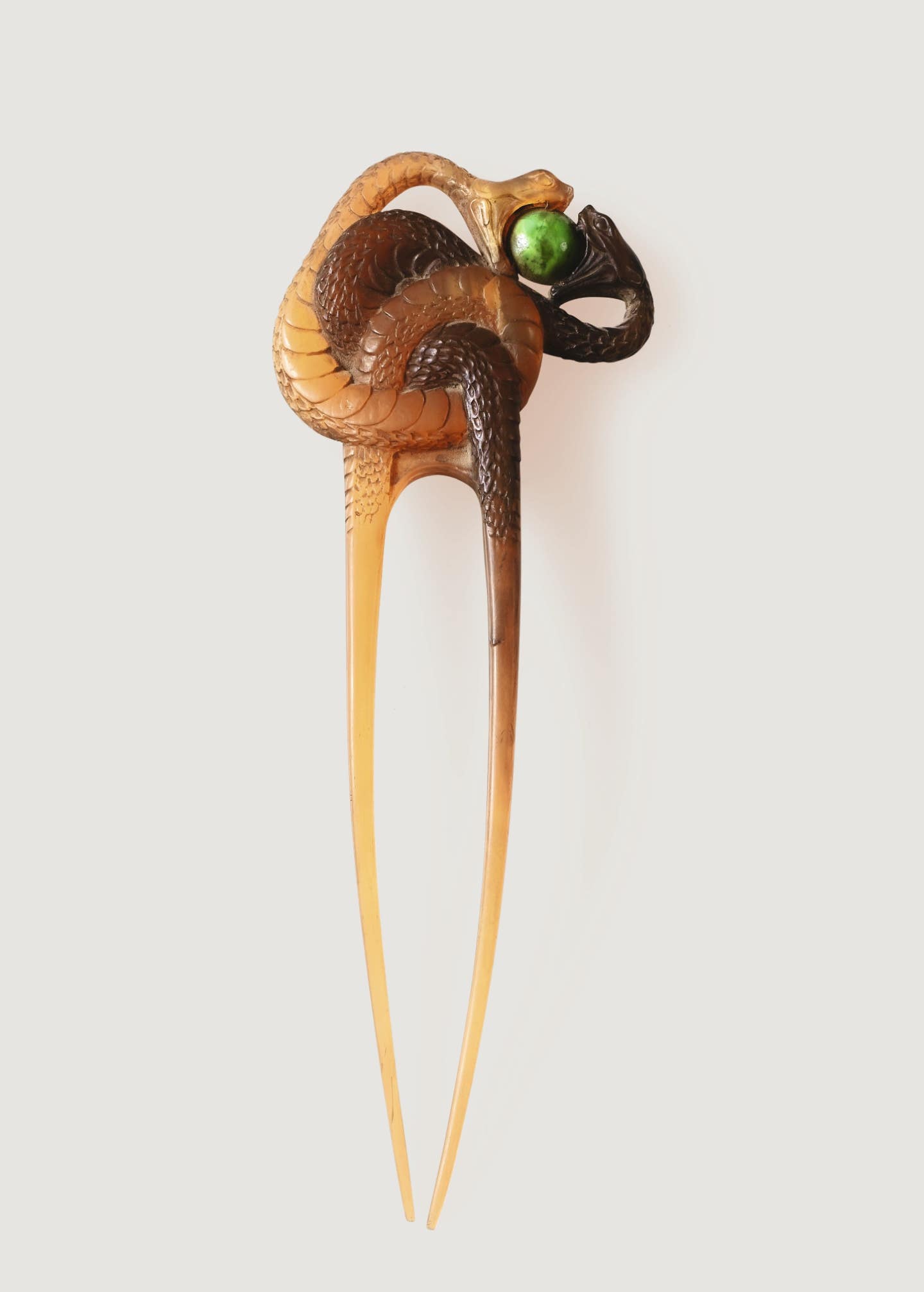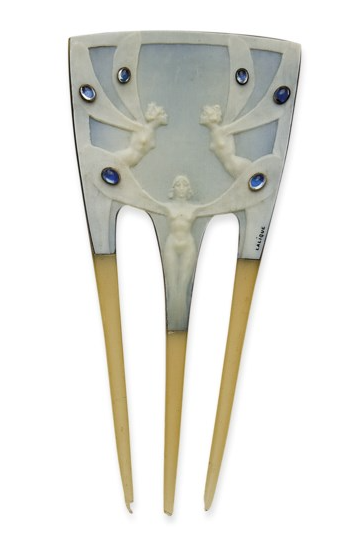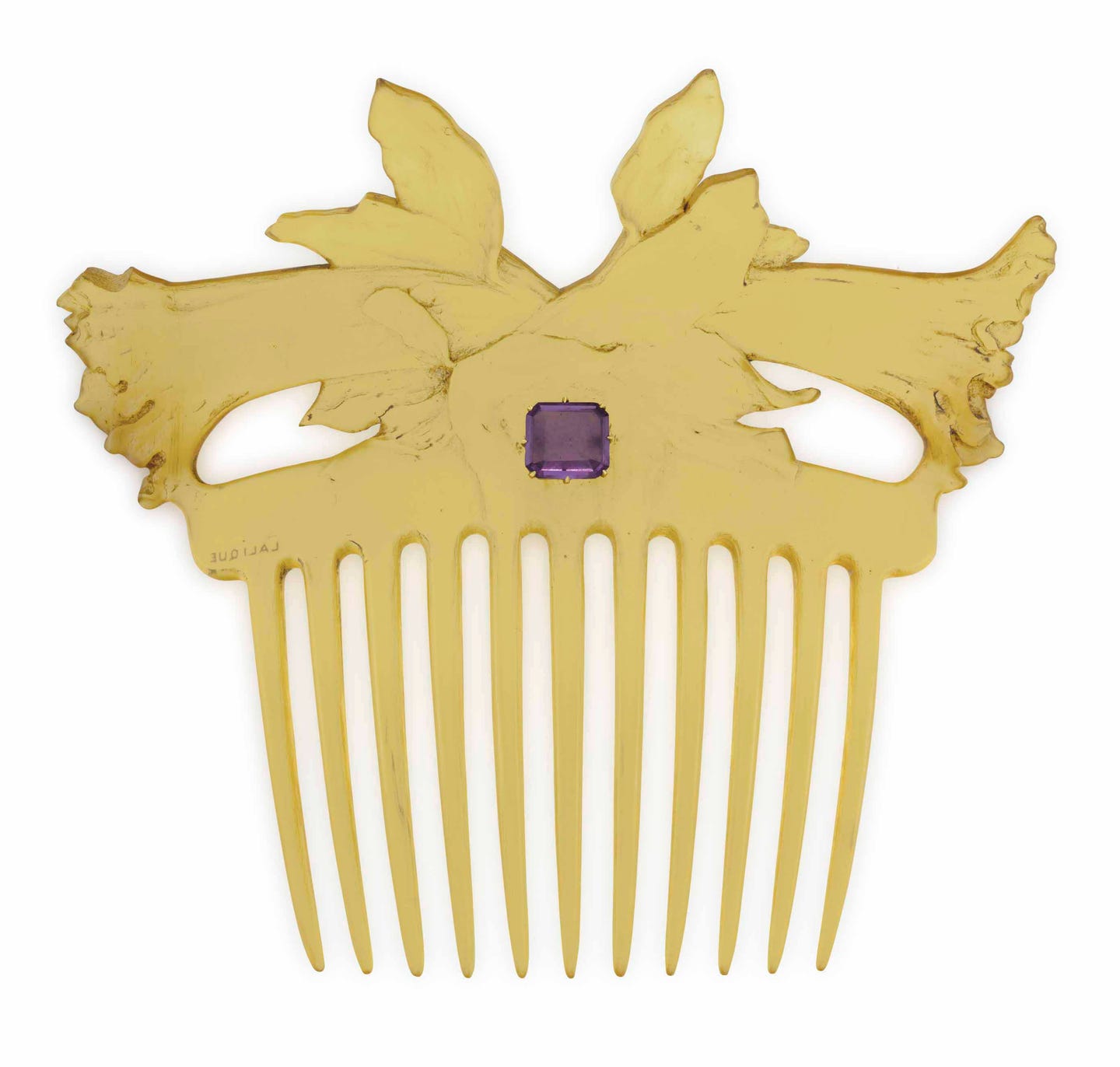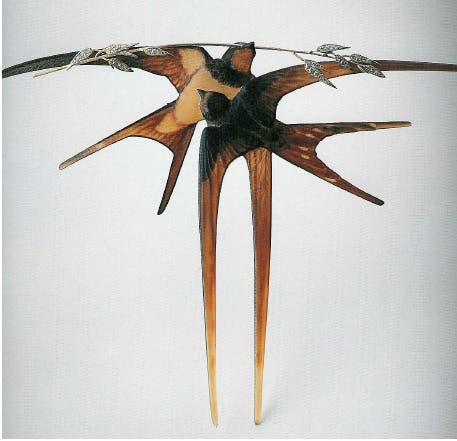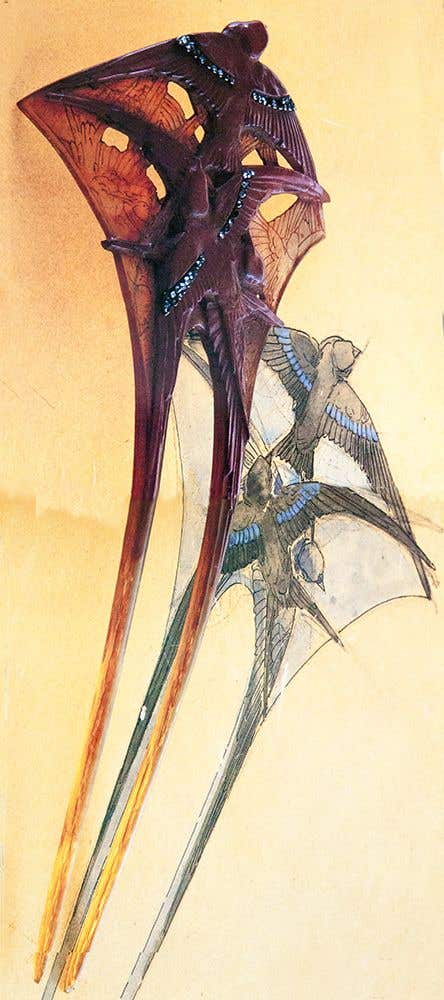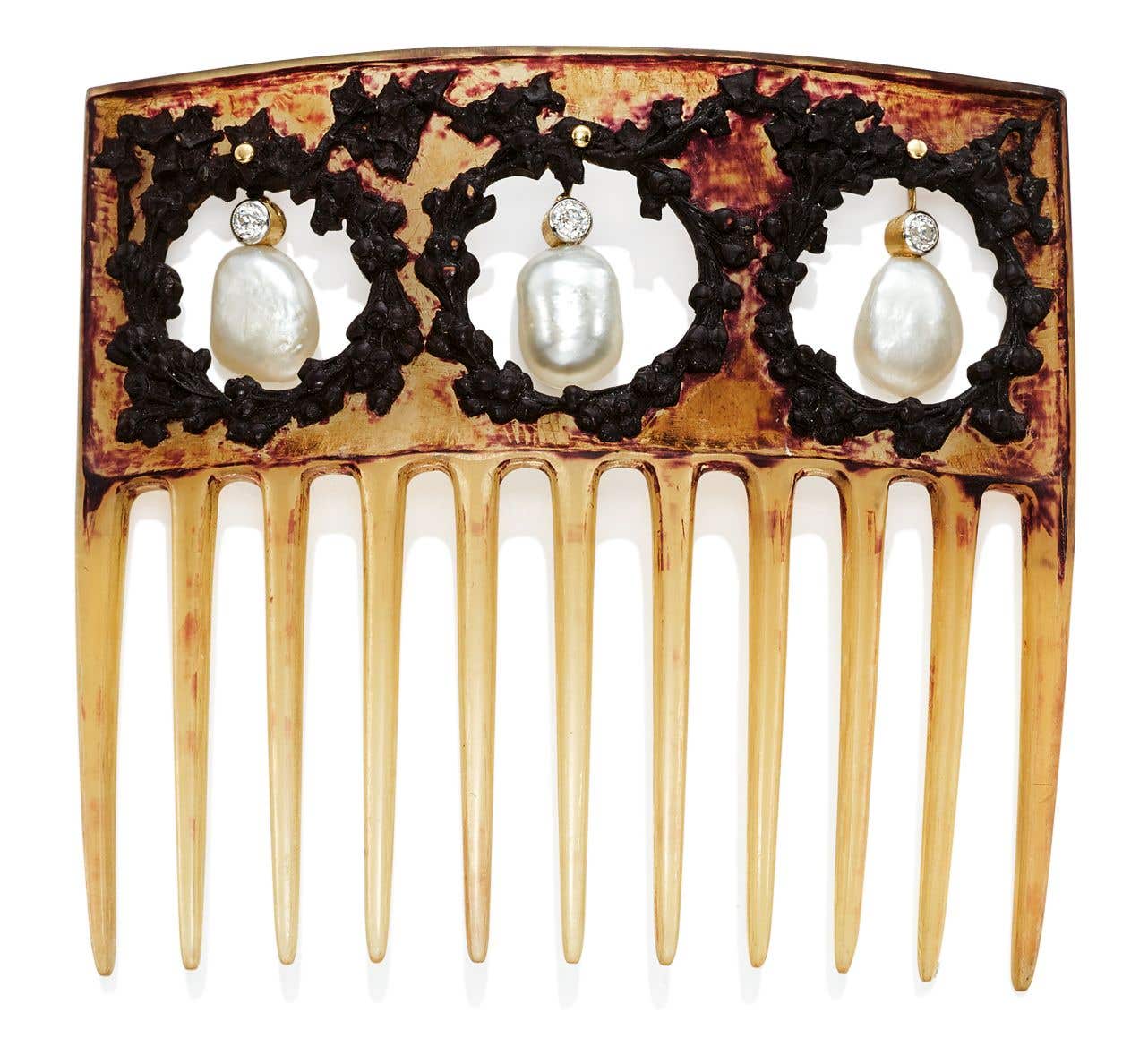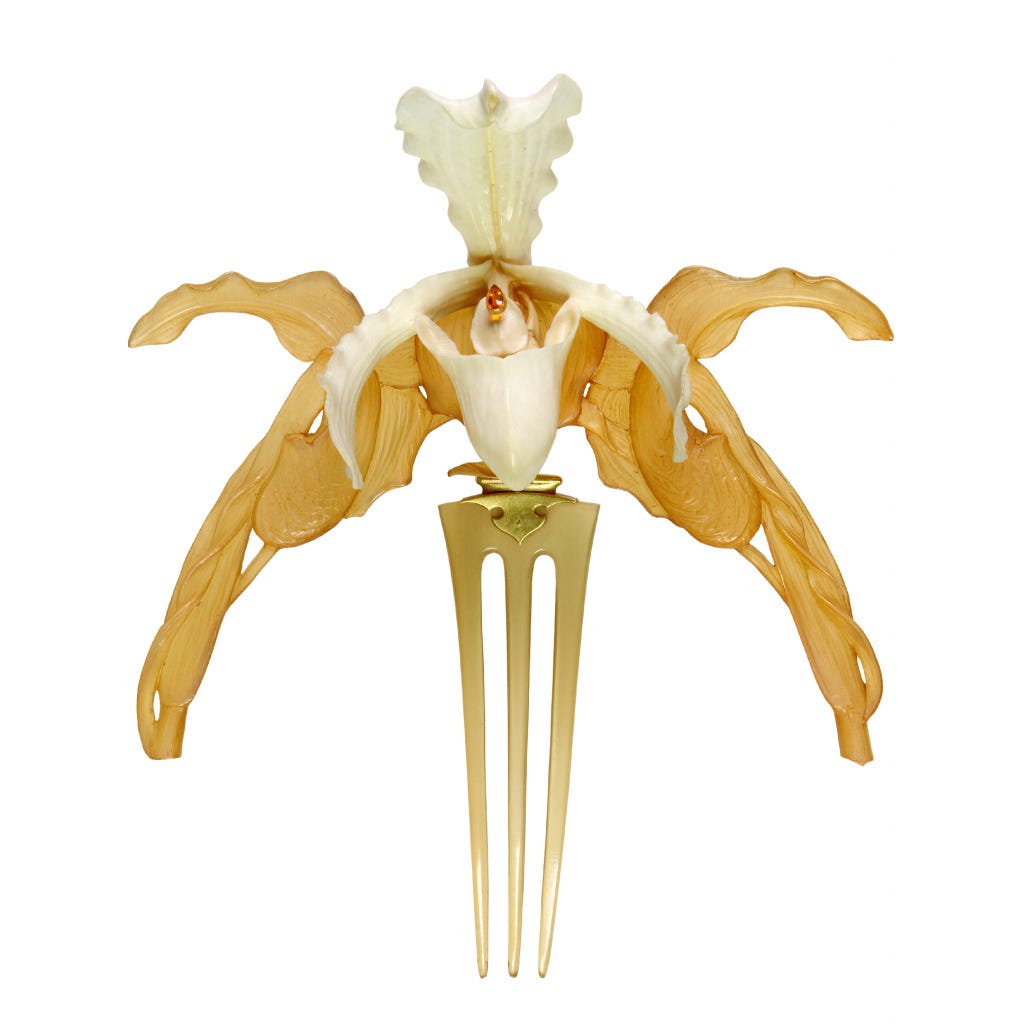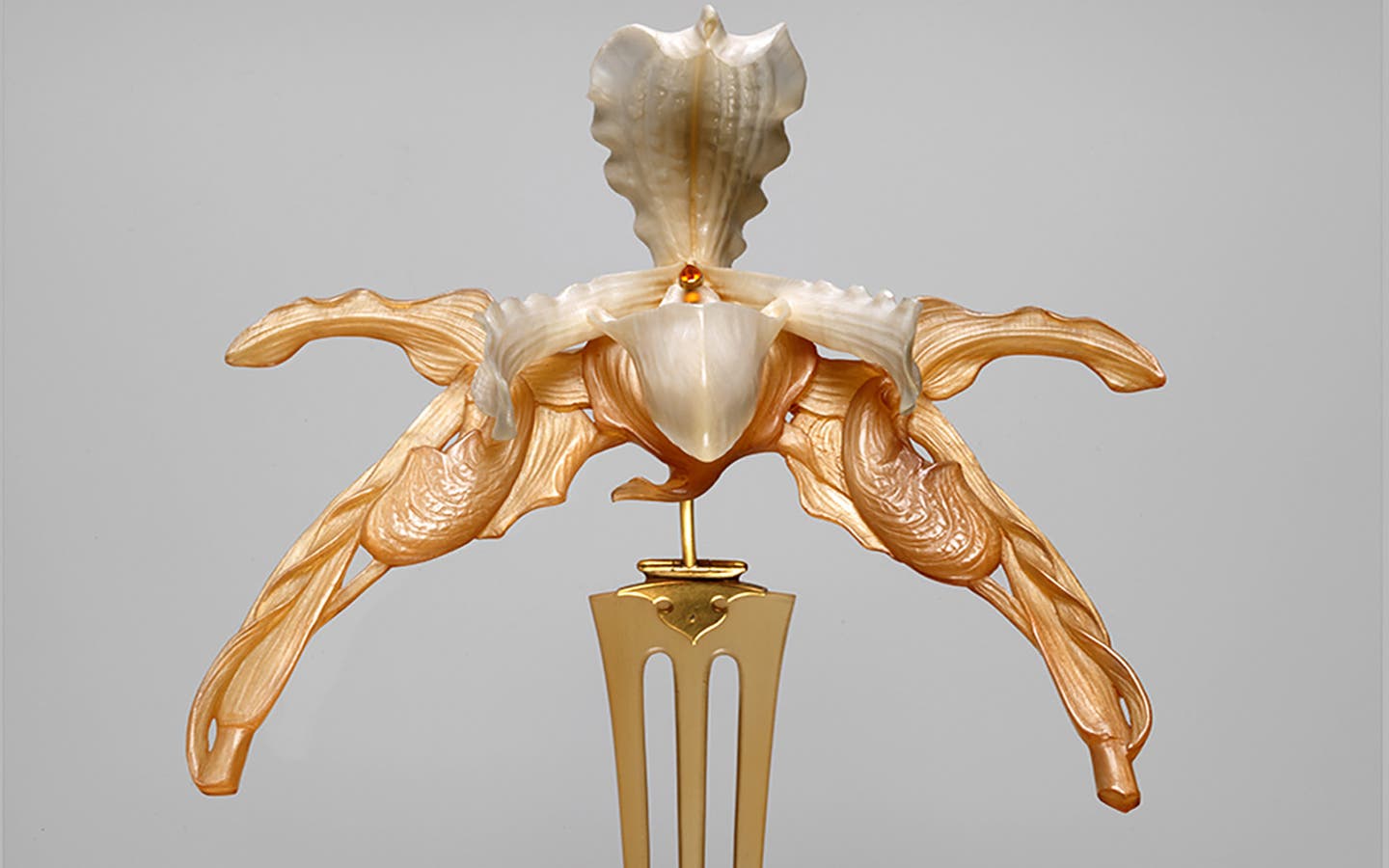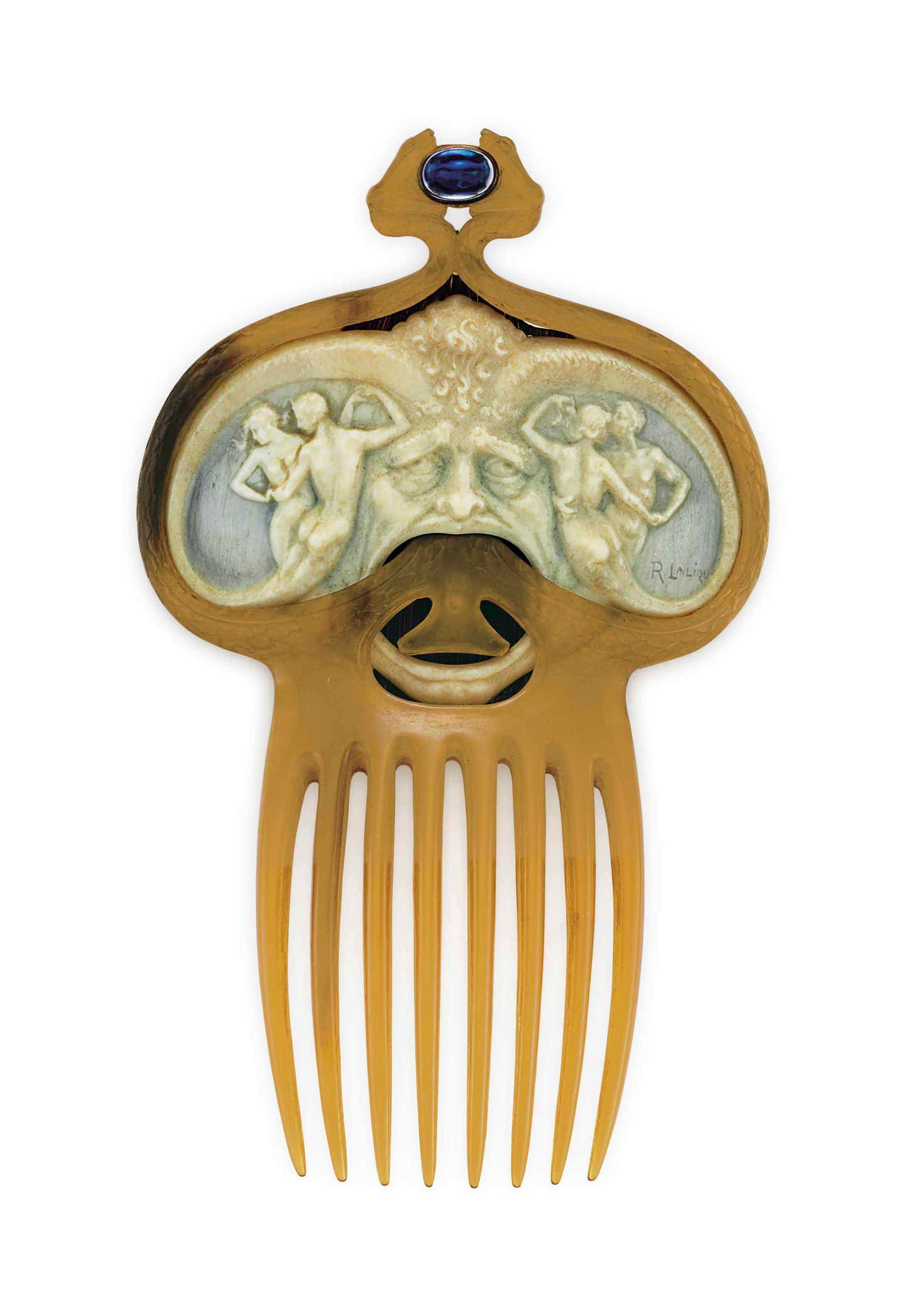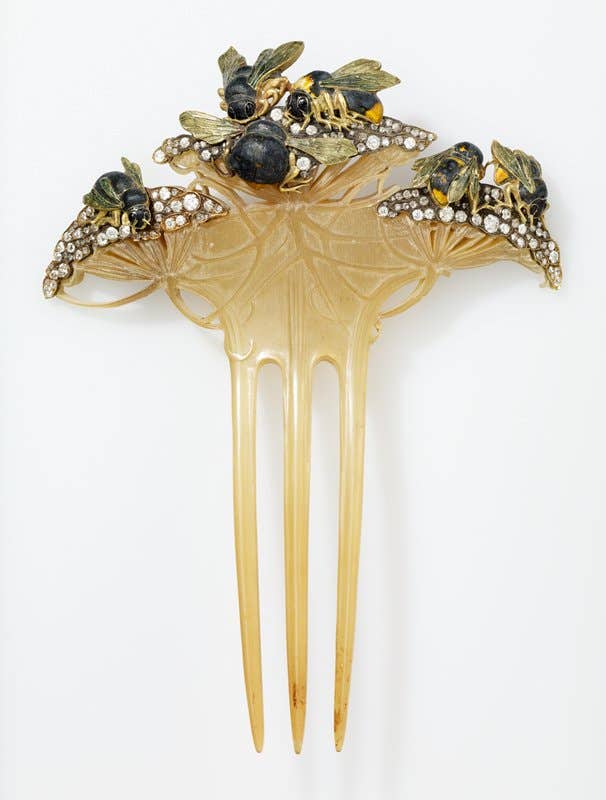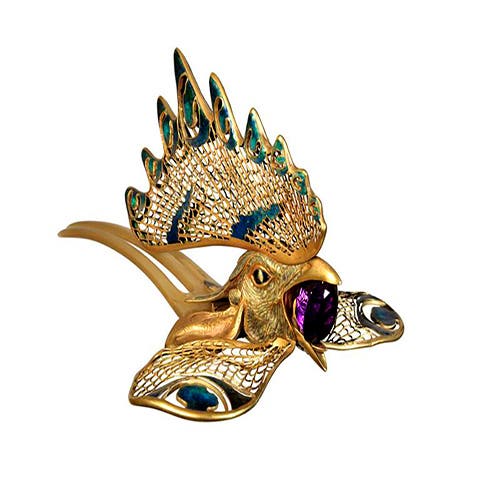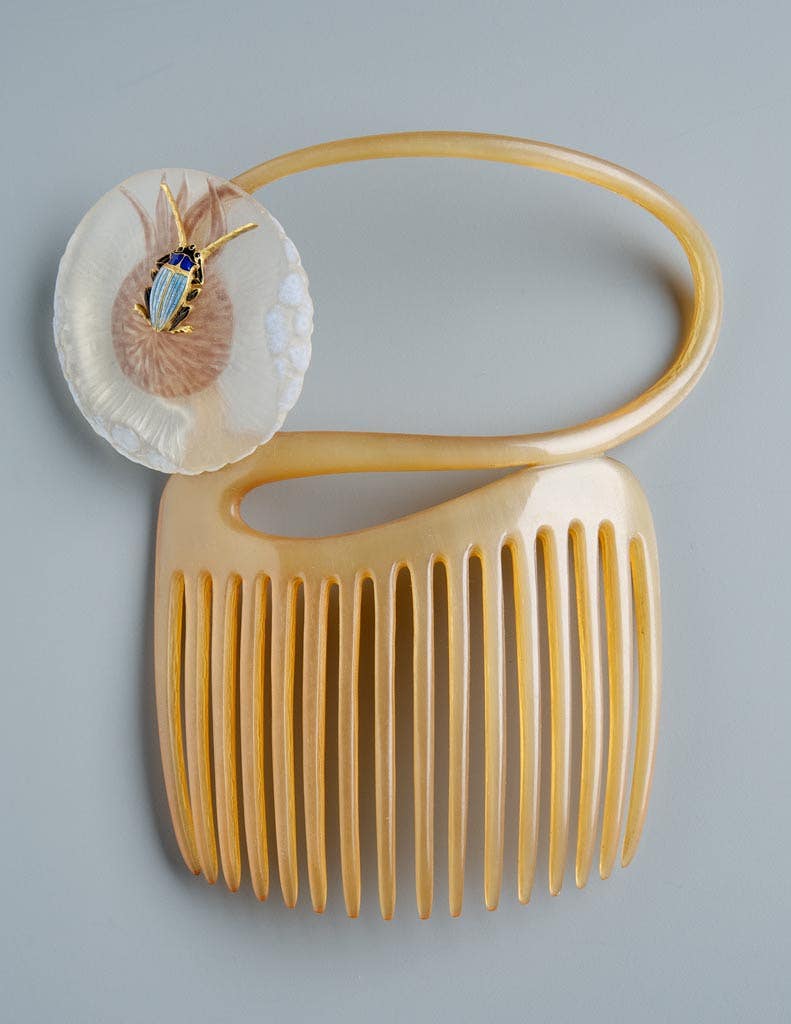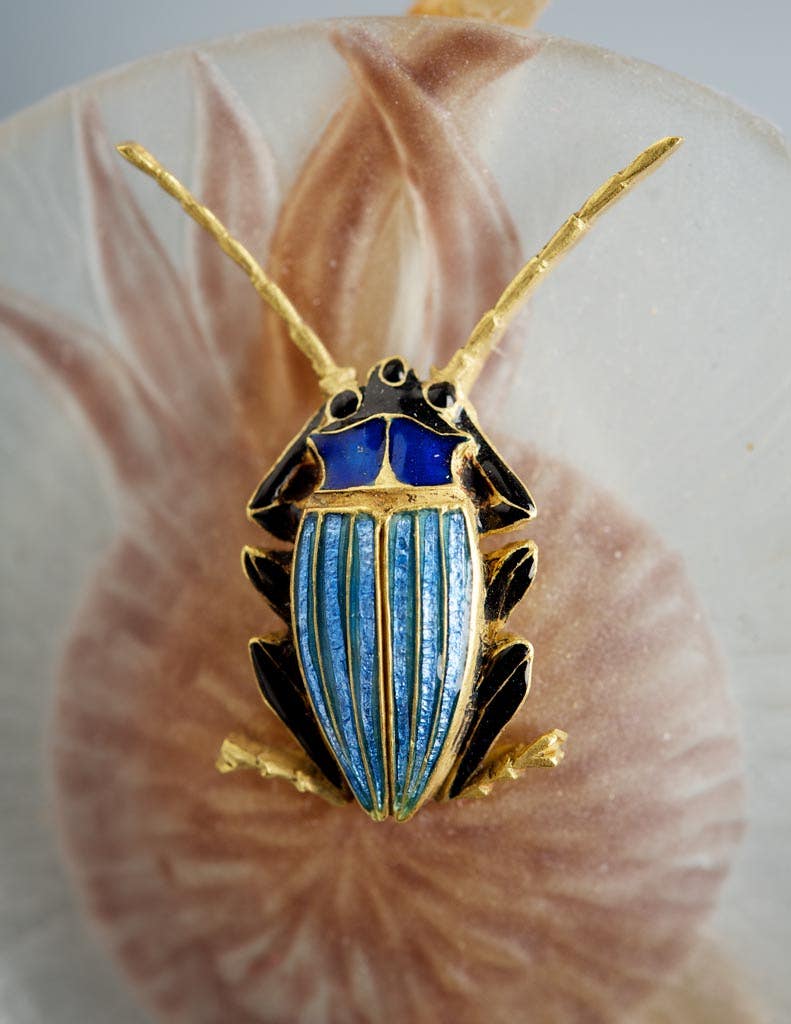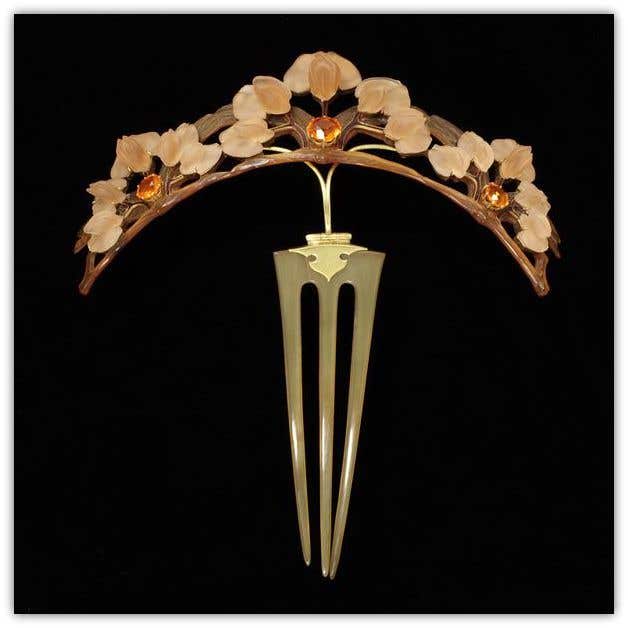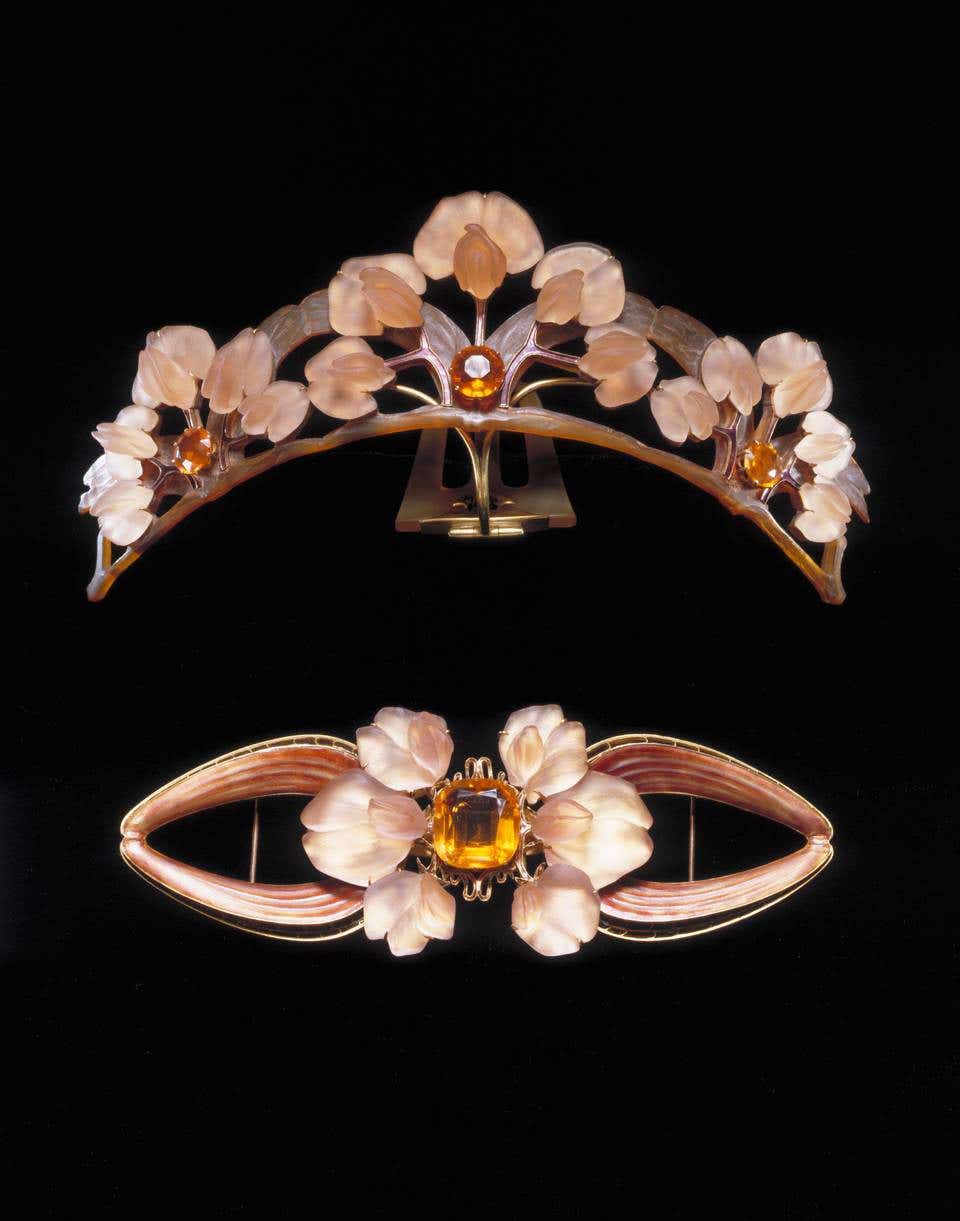The Stunning Horn Hair Combs of René Lalique
Credited with being the first Art Nouveau jeweler to use horn, the French designer dazzles with his collection of hair ornaments made from the material.
Recognized as one of the greatest jewelry (and glass) designers in the world, René Lalique was an artist full of imagination and creativity. He contributed significantly to the Art Nouveau movement, and was innovative in his designs and the materials he used.
Art Nouveau jewelers like Lalique distanced themselves from conventional precious stones and put greater emphasis on the subtle effects of materials such as glass, horn and enamel. Lalique chose his materials for aesthetic effect and artistic refinement, not for mere preciousness or brilliance.
Credited with introducing horn into the jewelry repertoire in 1896, Lalique mainly used buffalo horn from India or South America, which was flexible and could be pressed or twisted under heat, and also dyed. With colors ranging from almost colorless to deep rich browns, horn can be carved and formed easily and has been prized for centuries.
Lalique sculpted horn in the shape of flowers, waves, trees, butterflies, birds and more for his hair combs, diadems and other hair ornaments. He also inserted colored enamel into the spaces, using the cloisonné technique.
Lalique dazzled the public with his designs and many of his hair combs are considered masterpieces, residing in museums around the world. When one of his combs comes to auction, it can sell anywhere from four figures to a record-breaking amount, as was the case in 2015.
At a sale at Treadway Toomey Auctions, a rare Lalique sea holly hair comb, circa 1900 and made of horn, silver, gold and glass, caused a frenzy with collectors and sold for a hair-raising world record of $205,500. The pre-sale estimate had been $20,00-$30,000. The comb was from the collection of Roy and Sarita Warshawsky of Chicago automotive fame.
The sea holly comb is a curvilinear mirror image of two gold cone flowers with patinated silver stems and leaves. The plants frame the top of a large sapphire-colored glass cabochon. The lighter leaves in the middle are part of a second plant. Although they frame the bottom of the cabochon, the second plant continues on the bottom of the comb in delicately carved horn, with the stems doubling as its outside tines.
Most of these pieces may be small, but Lalique’s hair combs and other adornments make big and bold statements. Here are just some of his many other beautiful hair ornaments:
